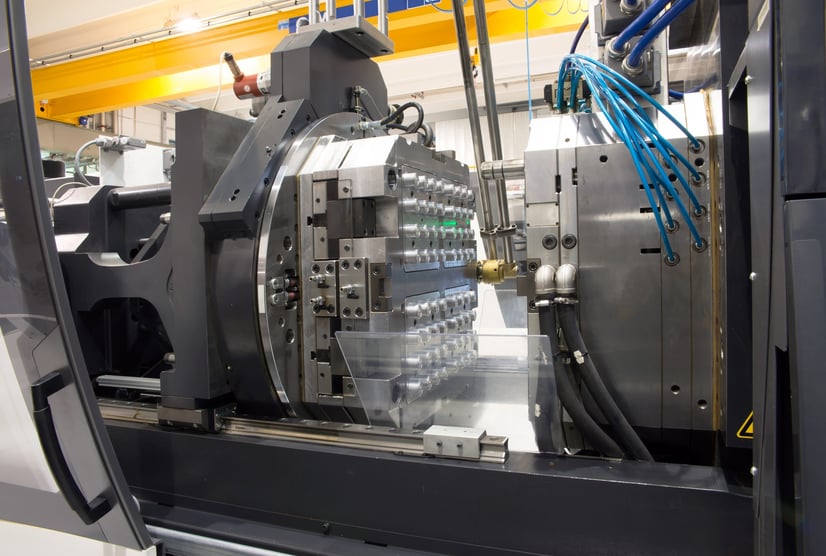
The properties of thermosets and thermoplastics are quite different—but the similarities and differences are often asked about. The primary difference in these two plastics comes down to heat and chemical resistance. Heat resistance is the primary function of a thermoset material, while thermoplastics—which are much more common—can only withstand heat to a certain degree. It’s worth noting that plastic injection molding companies typically do either thermoset or thermoplastic injection molding, but rarely do they handle both.
Below, we’ve broken down how thermosets and thermoplastics differ in the injection molding process, material availability, uses, cost, and recyclability. Take a look:
Thermoset Vs. Thermoplastic Injection Molding: A Comparison
Injection Molding Process
In thermoset injection molding, cold material is injected into an extremely hot mold to create a part. This process cures the part so it can never be melted again.
In thermoplastic injection molding, plastic material is melted and injected into a mold to create a part. Once this part cools, the mold opens and the part drops out.
Availability
The very first plastic materials created were thermosets, but today, thermoset injection molding is not as common except with electrical contact applications and liquid silicone. Thus, thermoset injection molders are typically more difficult to find than thermoplastic injection molders.
Uses
Thermosets are most frequently used in situations where the part must be able to withstand high temperatures. Medical parts are a good example; dental tools with silicone handles and metal parts must be able to withstand the autoclaving process in order to be sanitized and reused over and over again, so the silicone must be thermoset. Higher voltage electrical applications also use thermosets.
Thermoplastic parts are more likely to be used for consumer plastics that either won’t come in contact with high temperatures, like the plastic used in milk jugs, or will need to withstand moderately high temperatures. Certain polycarbonates, for example, are resistant to hot liquids and often used to make plastic to-go mugs—but they can still deform or melt at high-enough temperatures.
When considering thermoset vs. thermoplastic parts, you’ll also want to consider whether the part will regularly be contact with certain chemistries. If you’re manufacturing plastic casing for an EKG, for example, the material used will need to be able to withstand any hospital-grade chemical disinfectants.
Cost
The cost difference between thermoset and thermoplastic injection molding is not black and white. While the thermoset process is typically slower—which equates to a higher cost—the material difference in thermoplastic could range from 90 cents to $10 per pound, depending on the properties. That said, cost considerations should not be enough to sway an engineer toward one type or another—a decision should be based far more on material properties and the functionality of the part needed.
Recyclability
Thermoplastics are created by melting pellets and then cooling them, which ensures the finished part can also be remelted. This allows thermoplastics to be recycled. Of course, certain properties are no longer the same once you’ve melted a part down, so recycling a thermoplastic doesn’t ensure you’ll get the same quality plastic part—but it is worth noting.
Thermosets, on the other hand, cannot be remelted—so while thermoplastic parts could, hypothetically, be ground up and used in a sandbag, their recyclability factor is limited.
More questions about thermoset vs. thermoplastic injection molding?
We are experts in custom thermoplastic injection molding, and we are happy to answer them for you. Drop us a line, and let’s discuss.



